The Breathtaking Elegance of the Andersen Genève Jumping Hours Black Jade Stone
A ravishing, sleek, minimialist black jade dial for Sven Andersen's acclaimed jumping hours complication.
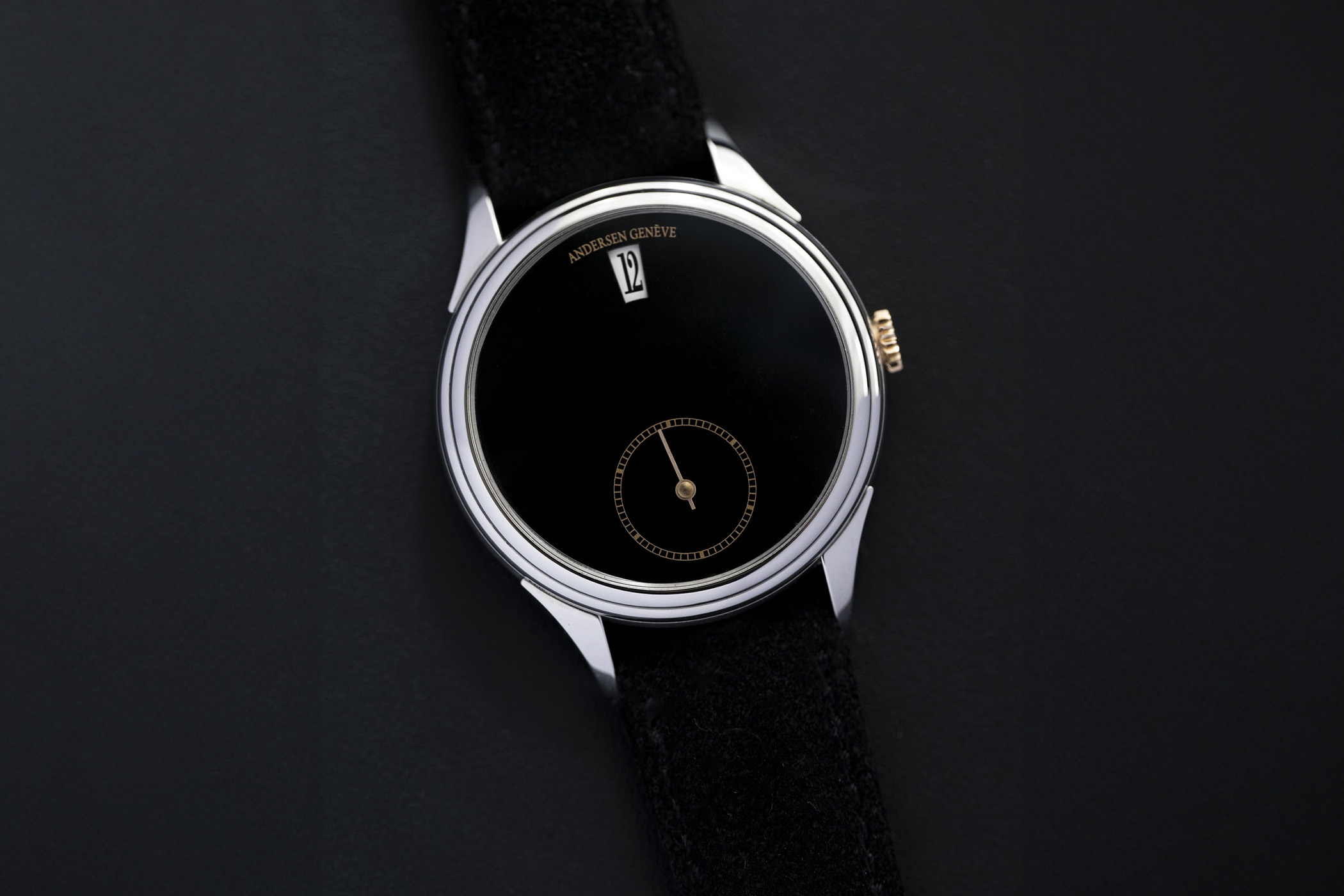
Master watchmaker Svend Andersen has been a renowned figure on the independent watchmaking scene since 1980. The Danish watchmaker’s ingenious and original approach to complications, including his sophisticated calendar watches and world timers, has captivated collectors and top-tier watch brands for years. To celebrate his 40th anniversary in watchmaking in 2020, Svend Andersen produced a stunning edition of his famous Jumping Hours complication in platinum with a blue guilloché dial. Four years later, the Jumping Hours returns with a hyper-sleek, black jade stone dial.
In 1995, Svend Andersen was commissioned by a client to create a bespoke piece with jumping hours combined with a day/night display and minute repeater. After seeing the unique piece, Cartier requested the complication for its Pasha Jour et Nuit in 1988. Andersen Genève’s 40th Anniversary Jumping Hours eliminated the day/night function and, inspired by the layout of jumping hour pocket watches, placed the hour window at noon counterbalanced by a subsidiary minutes dial at 6 o’clock. Produced in red gold and platinum cases, the anniversary model inspired the Japanese collector’s edition, also with an exquisite hand-guilloché dial and rotor.
The latest iteration of the Jumping Hours is a study in sublime elegance, an exquisite Black Tie interpretation that will be produced in a 50-piece limited edition. Presented in a compact 38mm diameter platinum case with an unobtrusive pink gold crown, the watch has a slim height of 9.2mm, perfect for a dress watch. The curving lugs, made separately and welded to the case, are highlighted with a mirror-polished finish, contrasting with the satin-brushed case flanks.
The inky black dial is made with a 0.4mm thin sliver of black jade. When viewed closely, you can appreciate the natural stone’s veins. Standing out against the exquisite minimalist canvas is the large date aperture at noon with a white background for the jumping hours. The small minutes sub-dial at 6 o’clock relies on a pink gold hand and a printed powdered rose gold peripheral railway-style minutes track. The only other element on the dial – the name Andersen Genève arching over the jumping hours‘ window – is also picked out in powdered rose gold, matching the crown.
Turning the watch over reveals a far more ornate panorama thanks to the solid 18k pink gold rotor decorated with a hand-guilloché barleycorn pattern. A signature Andersen Genève touch is the peripheral 21k BlueGold ring produced by a unique heat-treated process that results in a different tonality for each ring. The ring is engraved with Andersen Genève and the X/50 number of the edition.
The slim, automatic Frédéric Piguet 11.50 calibre powering the in-house jumping hours module has two barrels and a robust power reserve of 72 hours. Hand-finished components abound, including the Côtes de Genève decoration, mirror-polished screw heads and chamfering.
Availability & Price
The Andersen Genève Jumping Hours Black Jade Stone comes on a hand-stitched black suede strap with a platinum buckle. It is limited to 50 pieces and retails for CHF 52,800. For more information, please consult andersen-geneve.ch.

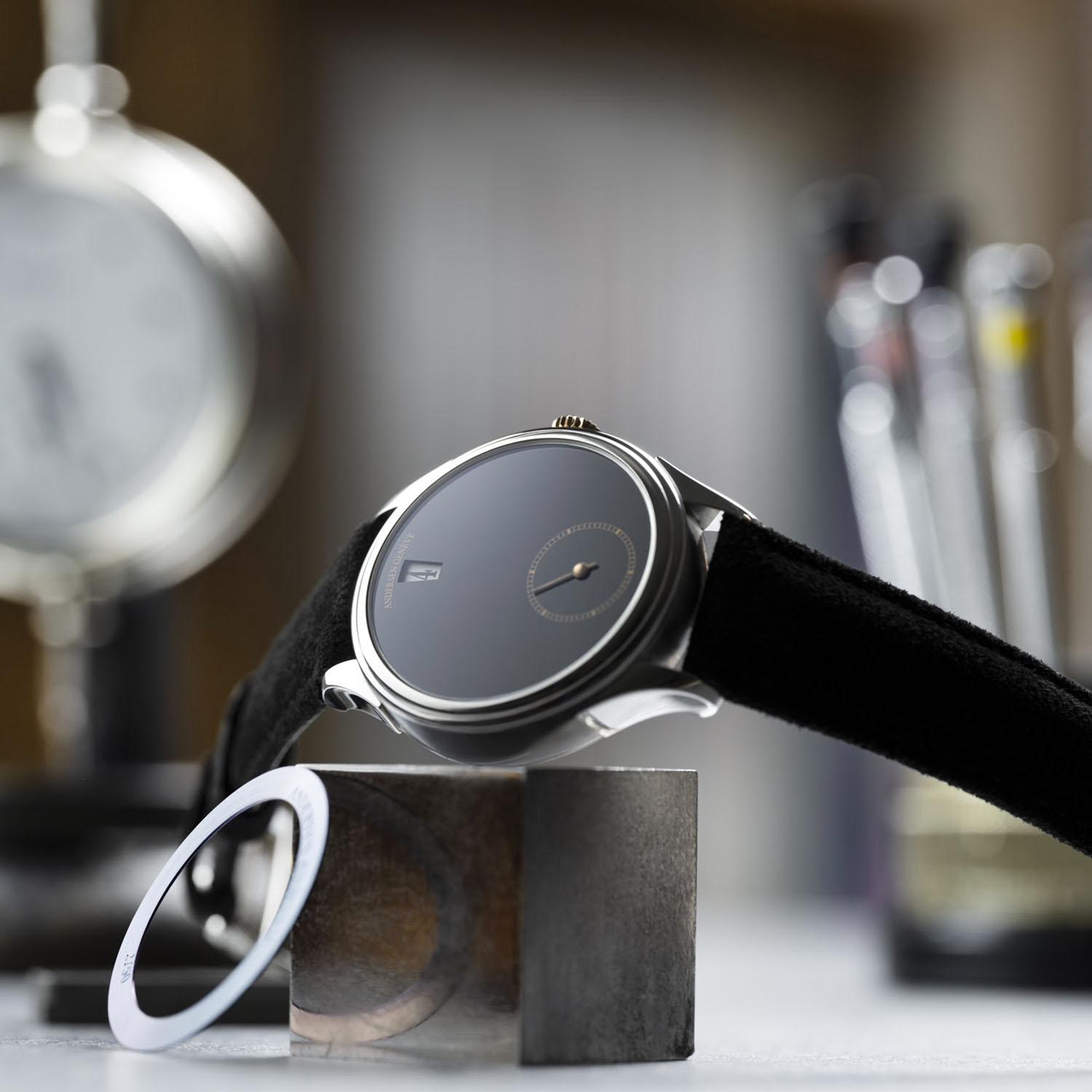

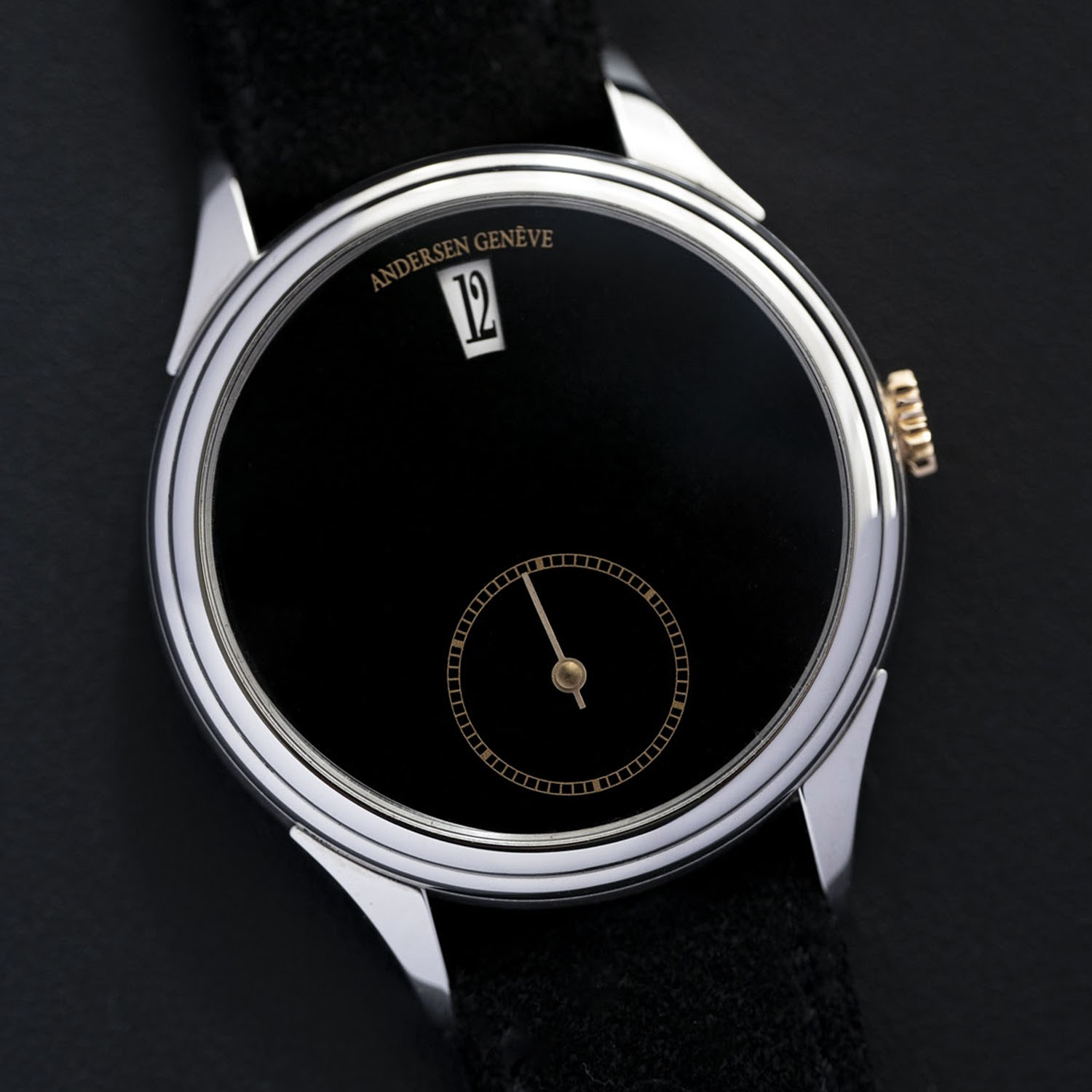
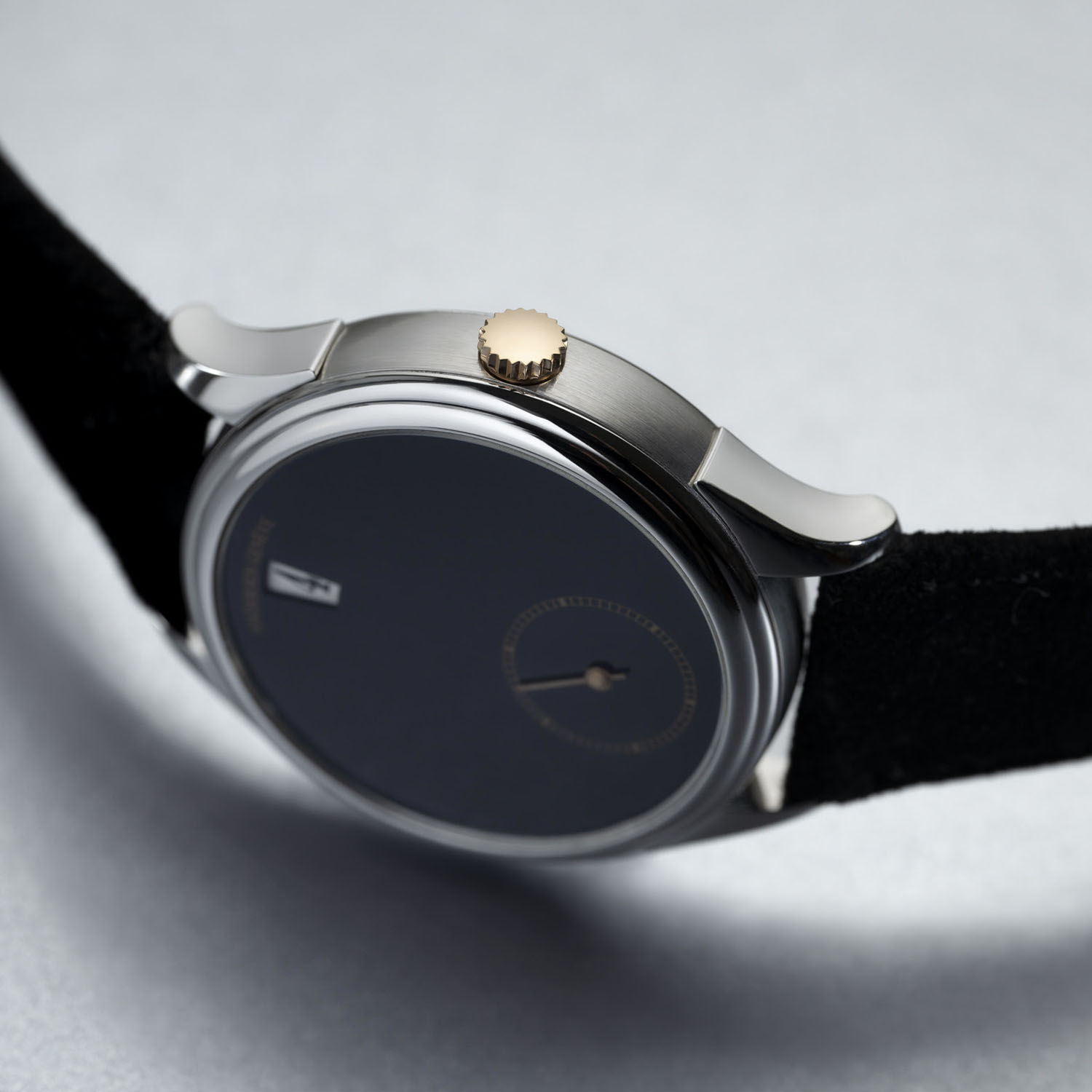
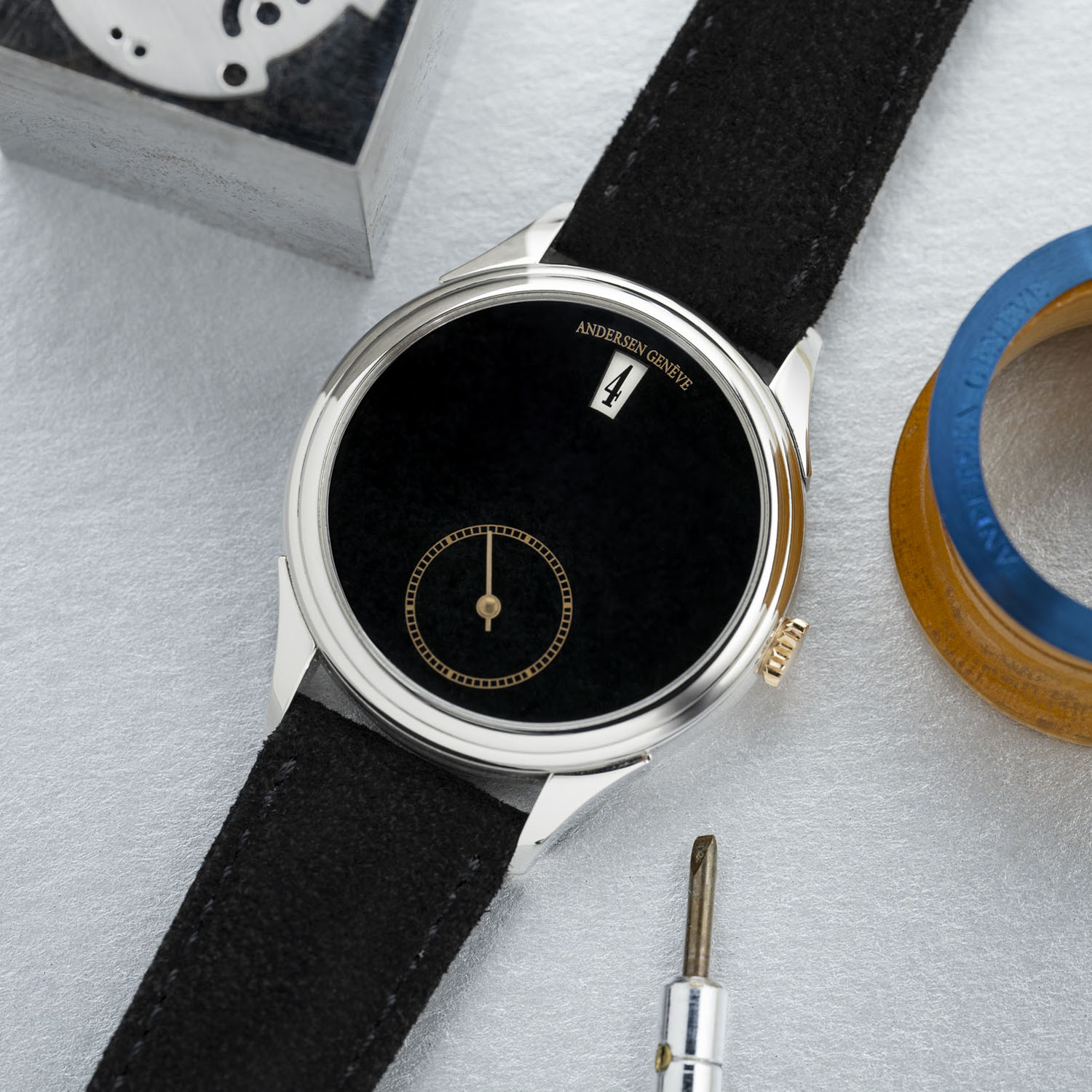
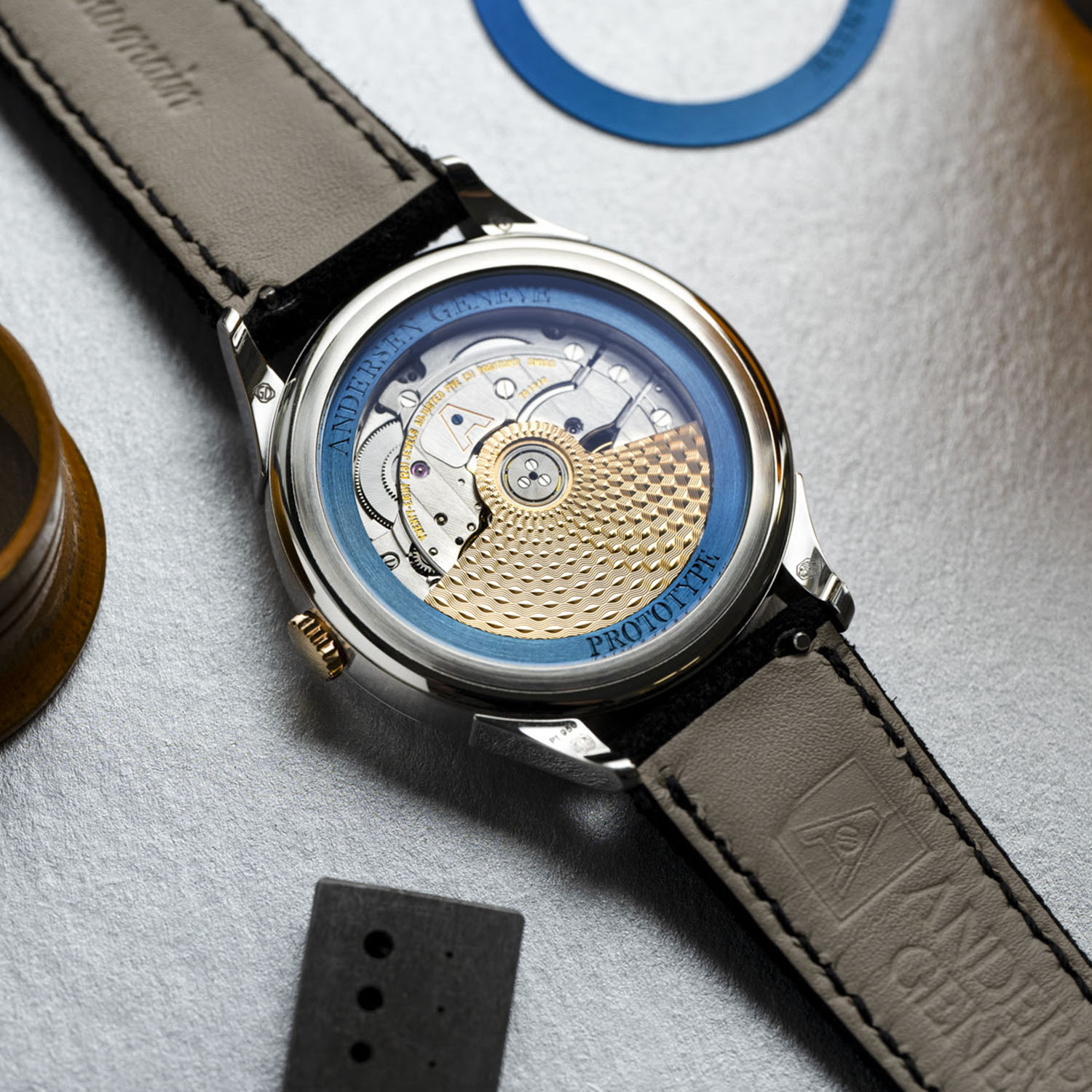
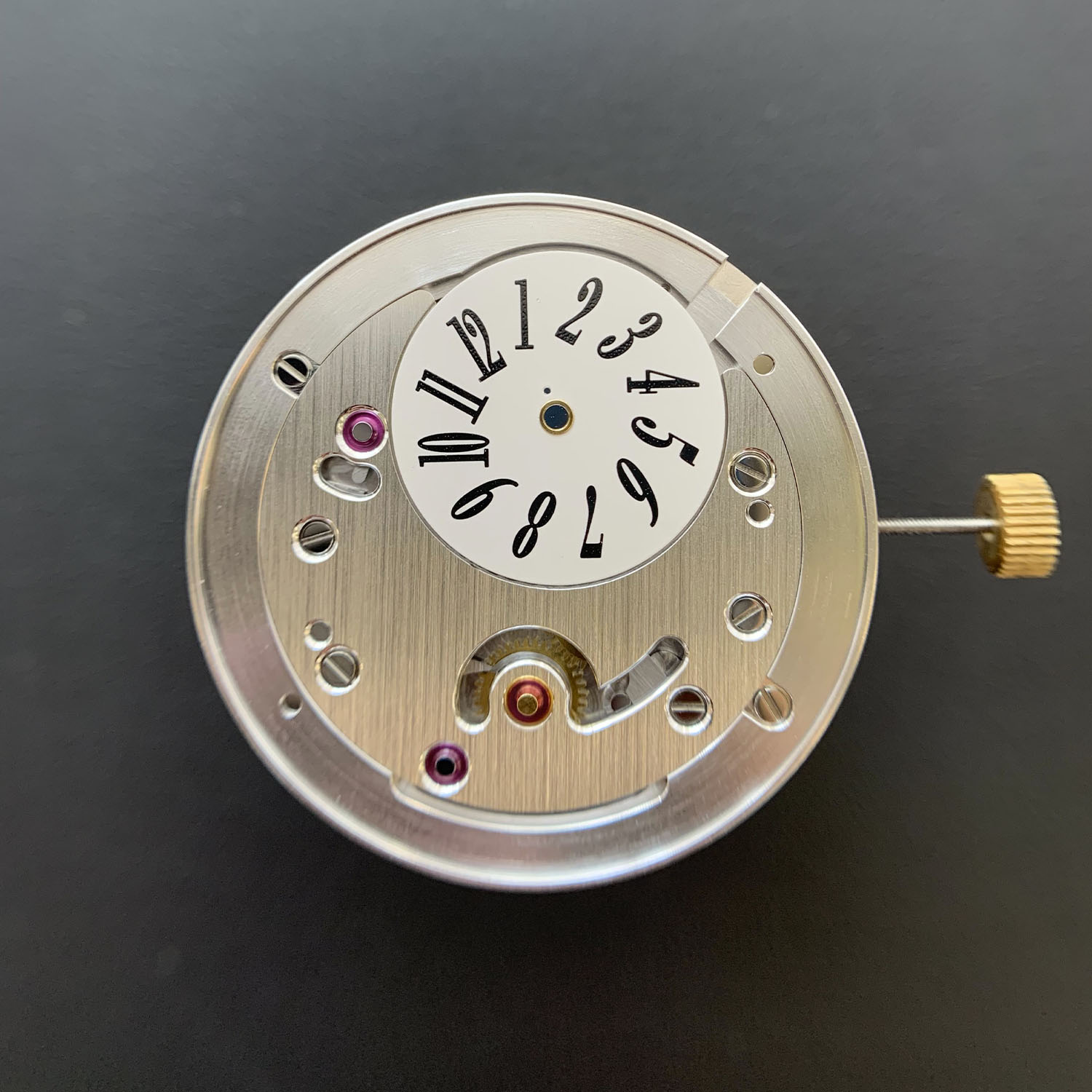



6 responses
How can you tell the time on it?
The hour is in the window at the top and the subdial at the bottom is a small minutes (not seconds) dial.
$52K good god these watchmakers have lost their minds.
So they turned their Only Watch into a 50 piece edition.
So lucky for the extra 49 who get to own one.
What a stunningly beautiful and elegant watch.
“The hour is in the window at the top and the subdial at the bottom is a small minutes (not seconds) dial.”
Yes, but the 5, 15, 25, 35, 45, and 55 should have been indicated with a thick stroke like the markers ending in ‘0.’ It would be more intuitive to read.
hehe so expensive